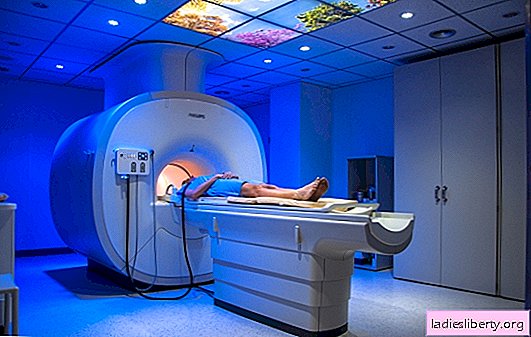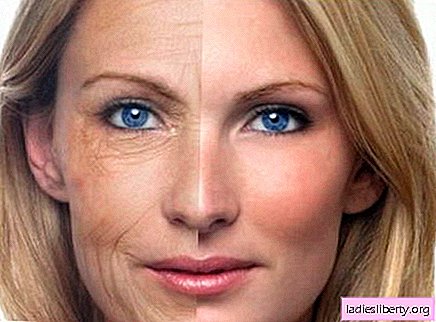
Medicine does not stand still and develops along with humanity, which was the reason for the appearance of computed tomography. With its help, it is possible to carry out a complete diagnosis of the human body and skeleton, which contributes to the appointment of a more accurate diagnosis. Nevertheless, computed tomography is harmful at every examination.
What is computed tomography?
This term increasingly sounds on the lips of physicians, and is prescribed in prescriptions for patients. The procedure is carried out in a specially designed apparatus, which consists of a gentry table. A beam tube and feedback sensors are located on the outside of the annular installation.
Computed tomography is a kind of x-ray familiar to everyone, but it is more detailed and accurate. If in the old “version” only the upper layers of the skeleton and the organism could be seen, then the innovative variation is capable of scanning the whole person in layers to the smallest detail. Vessels, metastases, tumors, various kinds of anomalies - all this will be seen in the obtained images. Computed tomography can be divided into three stages:
· Scanning - narrow beams of radiation move in a circle around the human body, performing a surface scan.
· Increased signal recording - signal waves are converted into computer code, which is the reason for the in-depth scan. It is at this stage that the human body is divided into detailed layers.
· Image analysis - at this stage, the medical worker receives images in high quality detailed, on the basis of which further diagnosis is made.
The principle of operation is as follows: sensors based on the feedback signal record the changes, then send them to the analyzer located in the computer. At the next stage, the information provided is amenable to decoding and printing x-ray images in increments of 1-5 millimeters of the body part being studied. Thus, the human body can be viewed with incredible detail.
Note: depending on the purpose, the medical worker has the opportunity to manually set the method by which the diagnostics will be carried out: spiral, circular.
Reasons for using computed tomography
This procedure is internationally recognized and helps to identify many diseases that cannot be determined using routine examinations and x-rays. It is worth noting that the CT scan shows bones and, even if metal elements are present in the body, they are not an obstacle during the diagnosis.
Computed tomography, the harm to the body of which is minimal, is used in such cases:
1. In cardiology, when you need to get a picture of a certain phase of the heart.
2. If necessary, obtain information about blood vessels, tumors, metastases and other physiological abnormalities that occur in the human body.
3. It is used for the purpose of a detailed study of a certain part of the body, up to determining the pathology of the joints.
4. It is prescribed for fractures and serious dislocations, in order to determine the severity of the case.
Note: computed tomography is carried out exclusively as prescribed by the attending physician of the patient, and cannot be used as a routine procedure for a general annual examination.
Computed tomography: harm
During the procedure, the human body is exposed to x-rays, however, for a healthy patient, the harm is invisible, and over time does not manifest itself. The fact is that when unwanted elements enter the body, the immune system begins an active struggle, and almost always eradicates a future problem at the initial stage.
In the history of medicine, there were no cases when computed tomography was so harmful globally that as a result cancer cells began to form in the human body. Theoretically, this is possible and even real, but for this it is necessary to expose yourself to frequent exposure and neglect the standards established by physicians.
Recommended Standards
In order to minimize computed tomography, the norms were established under which the human body receives a certain dose of radiation. Consider several of the most common procedures, as well as their consequences in digital terms:
· Computed tomography of the abdominal cavity and pelvis - 10 m3v;
· Head examination - 2m3v;
· Tomography of the chest - 7m3v;
· Mammography - 0.4 m3v;
· CT of the spine - 1.5 m3v;
· Intraoral radiography - 0.005 m3v.
Note: a single passage of computed tomography is harmful as it has been about three years in the natural environment. Between the CT procedure, we recommend doing intervals of 6 to 12 months.
Is it possible to exceed the dosage
During the implementation of the procedure, the human body receives a small dose of radiation, therefore, neglecting the recommendations is categorically not recommended. The barrier, which is installed on one adult, during the year is 150m3v. For a small child, this figure is several times lower, and also if a person is sick, the bar decreases.
Doctors highly recommend not reaching the established barrier, and even more so, since this may entail the following points:
· Mutation of cells.
· The formation and spread of cancer cells.
· Change in blood composition.
· With frequent exposure, the body's resource decreases and premature aging occurs.
Conclusion: computed tomography harms the human body unambiguously, but with the right dosage, the negative impact is minimized. The importance of CT in medicine is justified, and today it alone can diagnose many diseases that cannot be determined using other procedures.











